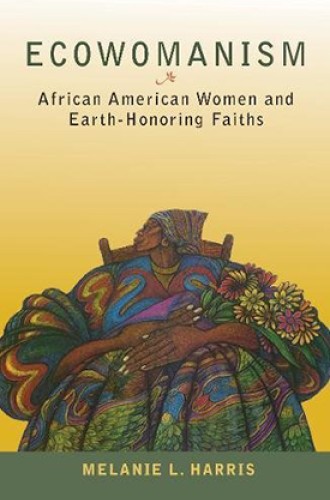Environmental injustice and who it hurts the most
Melanie Harris claims that abuse of the earth parallels the injustices faced by women of color.
When he was 14, my partner, Joel, was hospitalized with a partially collapsed lung due to asthma. When he tells the story, he mentions how he got to miss nearly two weeks of ninth grade as he plumped up like a rehydrated raisin from all the steroids he was given. The story we have learned since is that toxic waste billowing from Newark’s smokestacks caused asthma in one in four children who, like Joel, were raised in that metropolitan area.
Joel is a person of color and the son of immigrant parents. He’s not a black woman, but his story and others like it are included in Melanie Harris’s work. This small-but-mighty book is a primer in ecowomanist thought and method, which, if it could be reduced to a protest sign, would read, “earth justice is human justice.”
Ecowomanist thought privileges the experiences of black women because of the compounding injustices they encounter, particularly in the United States. Yet, at the same time, Harris locates stories like Joel’s in a broader narrative of race, religion, gender, class, and environment. Her work challenges readers to ask: If climate injustice has affected people like Joel, how much more will it affect poor women of color?
Harris builds on her definition of ecowomanism throughout the book, landing on her clearest articulation in the final chapter:
Ecowomanism is [the] critical reflection, contemplation, and praxis-oriented study of environmental justice from the perspectives of women of color and particularly women of African descent. It links a social justice agenda with ecojustice, recognizing the parallel oppressions that women of color have often survived when confronting racism, classism, sexism, heterosexism, and similar oppressions that the earth is facing through environmental degradation.
Harris’s primary claim is that all of the isms faced by women of color are tied to the injustice done to the earth through human-caused climate change.
This interconnection reflects the solidarity that exists between women of color and the earth. “This solidarity . . . draws parallels between the way that enslaved African women’s bodies were violated, raped, and abused by white oppressors . . . and the way that the body of the earth feminine has been abused at the hands of its abusers.” Harris attempts to deconstruct this harmful narrative and re-create one that places black women’s experiences at the forefront of “shaping environmental thought or policy.” She returns repeatedly to stories—from her own family history of sharecropping in Colorado to scenes from Alice Walker’s novels and essays—as she repositions black bodies (and particularly black women’s bodies) at the forefront of ecological conversation.
One story Harris turns to is that of the death of Eric Garner, a black man who suffocated in the hands of the New York Police Department in 2014. As Newark’s billowing smokestacks did to Joel, the polluted Staten Island environment in which Garner grew up triggered his asthma. “Garner did not only suffer from the impact of the illegal choke hold forced on him by the officer,” writes Harris, but from the disease in his lungs. “As a consequence of the environmental health hazard of air pollution in Staten Island,” Harris continues, “Garner, like thousands of children and adults living in and breathing in nonclear air, suffered not only because of racially motivated violence, but also because the air in his community robbed him of a normal quality of life: the right to breathe clean.”
By claiming earth justice as human justice, Harris shows that care for the environment concerns not just the physical world but also the people who inhabit it. It’s at this juncture that people of faith have entrance into the conversation. Historically, some Christians have had a complicated relationship with environmental justice. Harris’s repositioning of care for the environment as care for all humanity brings the conversation to a broader audience. Ecowomanism’s concern for the “tripartite oppressions” of gender, race, and class subjugation reimagines environmental injustice as an obligation to “the least of these,” especially as marginalized populations are affected most by pollution and climate change.
In this way, Harris calls Christians to the work of justice, on behalf of black men like Garner who suffered from environmental and institutional racism, as well as for women of color who have been abused for their deep connection to the earth. One thing Harris makes clear is that ecowomanism is for the flourishing of all creation: women, men, and children of all races and genders, as well as the material world they inhabit. Ecowomanism, then, is a book for everyone.






